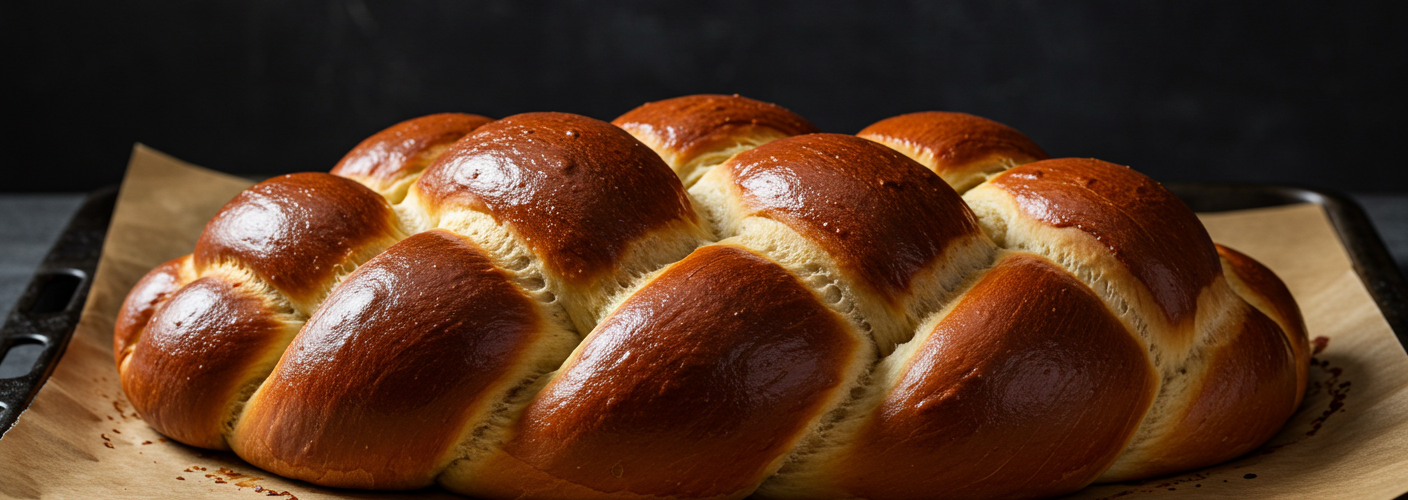Challah, a traditional Jewish bread, holds a special place in the culinary and cultural tapestry of Jewish life. Known for its beautiful braided form, Challah is not only a feast for the palate but also a symbol rich in meaning and tradition. Whether enjoyed during the Shabbat meal or on festive occasions, this bread brings people together and connects them to their roots.
The Origins of Challah
The word “Challah” can be traced back to the Torah, where it refers to a portion of dough separated and given as an offering. Traditionally, this bread is baked to observe the mitzvah (commandment) of separation. Over the centuries, Challah has evolved into a beloved household staple, often prepared for significant occasions and family gatherings. Its origins highlight its sacred placement within Jewish customs, where bread has always symbolized sustenance and community.
Ingredients and Preparation
The ingredients for Challah are simple yet rich: flour, water, yeast, sugar, eggs, and salt. These basic components come together to create a dough that is both soft and slightly sweet. The inclusion of eggs gives Challah its distinctive golden hue and enriched flavor, making it a perfect accompaniment to savory dishes.
To make Challah, the dough is first mixed and kneaded until it achieves a smooth and elastic consistency. The magic begins during the rising process, when yeast ferments the dough, allowing it to double in size. This part of the process signifies growth and potential, an important theme in Jewish culture.
One of the most captivating aspects of Challah is its preparation, particularly the braiding technique. Traditionally, Challah is braided in a three-strand or six-strand formation, with each strand representing different aspects of life, such as justice, peace, and truth. As it bakes, the bread develops a lovely crust while maintaining a tender crumb inside, creating a delightful contrast in texture.
Challah in Jewish Tradition
Challah is intimately tied to Jewish rituals and traditions, very prominently during Shabbat. Every Friday evening, families gather to welcome in the Sabbath, and it is customary to break bread together, often accompanied by wine. The braiding of Challah signifies unity and harmony, embodying the spirit of togetherness that is central to the Shabbat observance. During the blessing over the bread, the importance of gratitude and connection to one’s heritage is reinforced.
Hebrew festivals like Rosh Hashanah and Yom Kippur also feature Challah, often in circular shapes to symbolize the cycle of life and the continuity of Jewish tradition. Each occasion brings unique flavors and toppings to the bread; some families even add raisins or other fruits, making each celebration distinct.
The Modern Twist on Challah
Today, Challah has gained popularity beyond its traditional roots, inspiring innovative recipes and flavor combinations. Chefs and home bakers alike experiment with different toppings, fillings, and even variations like whole wheat or gluten-free versions, expanding this beloved bread’s reach. Social media platforms showcase a myriad of stunning creations, inviting a new generation to engage with this age-old culinary tradition.
In conclusion, Challah serves as a bridge between history and modernity, intertwining cultural significance with culinary delight. Whether through a modest home-baked loaf or an extravagant version at a festive table, Challah continues to nurture connections among families and communities, exemplifying the warmth and richness of Jewish life.




Add comment